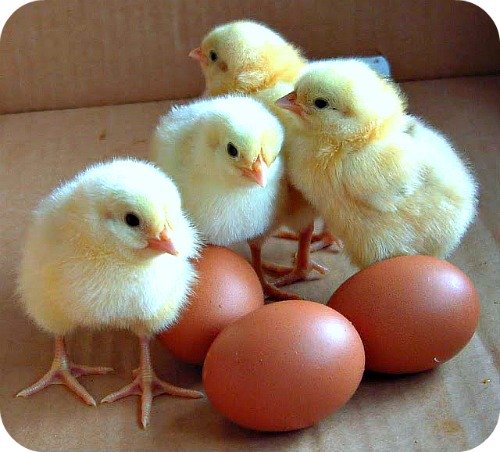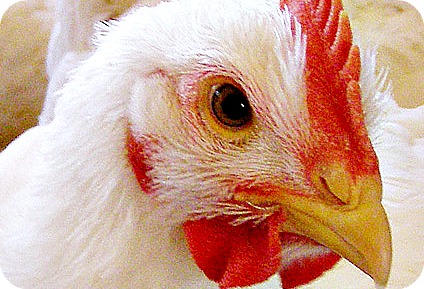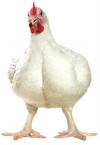Uganda Poultry Farming Business Guide
| Proudly Sponsored by Our dedicated Network of Poultry Farmers |
Whether you’re just starting out in poultry farming or you’re already in the Chicken raring business, this farming Business guide, can help you maximize profit from your poultry farm.
|
Poultry farming is the raising of domesticated birds such as chickens, turkeys, ducks, and geese, for the purpose of farming meat or eggs for food. Poultry are farmed in great numbers with chickens being the most numerous. More than 50 billion chickens are raised annually as a source of food, for both their meat and their eggs. Chickens raised for eggs are usually called laying hens/layers whilst chickens raised for meat are often called broilers. |
The Africa Uganda Poultry Farming Guide focuses on providing information, tips and advice to help you start and operate a profitable chicken raring business in Uganda. The free information in this guide would not be available without the generous support from Our Dedicated Network of Poultry Farmers.
What you will find in this guide:
- Uganda Chicken Farming Industry Review
- Keys to success for your Chicken farming Business in Africa
- Thinking business on your Poultry Farm
- Uganda Chicken Business Profitability Tips
- Where to Buy or Sell your Chicks/Chicken/Eggs
- Poultry Farming News, Free Chicken raring advice and Industry Success Stories
- Kuroilers' Poultry Guide
- Layers' Poultry Guide
- Broilers' Poultry Guide
- Turkeys' Poultry Guide
Chicken Farming as a Business in Uganda
Uganda is estimated to have between 40 and 50 million chickens. Of these, at least 30 million are hybrids, while the rest are local breeds. Most of the hybrids are kept in closed shelters. Local chicken are mainly kept on a free-range system, where they look for food for themselves.
Although local chicken are commonly referred to as enkoko enganda (Buganda chicken), Buganda is not the leading chicken-keeping region in the country. Bunyoro, Lango and Teso regions have the highest number of local chicken. On the other hand, Buganda region has most of the hybrid chicken are” almost 90%.
Hybrid chicken is more expensive to keep, but you get higher returns than the local breeds. For example, you need a good shelter and money to buy feeds and drugs for the chicken. However, if you’re rearing broilers, you can get a return on your investment in just two months, while local chicken you will need at least seven months before you can sell the birds off as food.
There is a ready market for chicken and chicken products across the country and in the region. This is why irrespective of other factors, chicken prices have risen from an average sh7,000 two years ago, to around sh10,000 for hybrids and sh15,000 to sh25,000 for local chicken.
This Africa Uganda Poultry Farming Guide is Sponsored by Our Dedicated Network of Poultry Farmers
Will I have Market for my Chicken or Eggs?
We can’t proceed without mentioning that the retail prices of eggs have risen from sh3,500 a tray over 3 years ago, to over sh6,000 now. One of the reasons chicken prices went up a few years ago was the entry of the South Sudanese market. Traders say chicken producers are not able to satisfy the market, hence the need for more investors in the sector.
Meaning, your chicken and eggs were needed in the Market yesterday as long as you can risk beyond the Industry challenges.
You need to carefully plan how you will feed your birds before they generate a penny because there is a scarcity of raw materials for making chicken feed. According to some farmers, there is relative scarcity of maize bran, cotton feeds and mukene (silver fish), that has subsequently led to a sharp increase in prices.
This Africa Uganda Poultry Farming Guide is Sponsored by Our Dedicated Network of Poultry Farmers
How to think Business when rearing chicken in Uganda
Business is an activity operated for the purpose of earning a profit by providing a service or product. Entrepreneurs or associations of entrepreneurs put their money at risk.
The risk is associated with an activity or venture for the purpose of earning a profit. Regardless of the type of business, there is a need to take into consideration the costs of production and marketing of the output commodity.
New Terms to learn when planning a Profitable Chicken Raring Business
Production Costs: These are the financial and non-financial expenditures used in producing a commodity. For example, the costs pertaining to a farming business include seeds, chemicals, transport, processing, packaging and marketing. While costs pertaining to tailoring include a sewing machine, fabric, thread, machine oil, scissors, needles, and labor etc.
Poultry: Fowls/birds domesticated and raised for meat, in this case specifically chickens.
Labor costs: The total expenditure paid for family labor1 and for hired casual labor in the production of a specified commodity. Farms may have a casual labour cost for activities such as sowing, weeding and harvesting. Tailor shops may have no need for outside labor.
Yield or Output: This is the total volume of the product produced in a given time period. In case of a farm business, the yield would be in terms of quantity of crop produced (kilograms) per acre after a season, while in tailoring it would be the number of dresses, shirts, trousers, bed-sheets made and ready for sale, over a specified time period.
Producer Price (“farm gate price”): This is the price at which the farm-business sells the commodity to an on-farm buyer. The price is usually lower than terminal market prices. For example, clothing purchased at a village tailor may be resold in Kampala at a higher price.
Likewise, maize and beans can be bought from the farmers at lower prices and resold in town markets at higher prices.
Gross Income (Total Income): The sum of money an entrepreneur receives for selling his output commodity before deducting the costs incurred for producing that commodity.
Net Profit: The sum of money left when all costs of production are deducted from the gross income.
Return to Labor: Net profit divided by total number of person-days used to produce the commodity.
Person-day: a unit used to measure casual labour.
Operational Costs: The costs of actions or services needed to produce the output commodity. Note that this does not include the costs of inputs. For example, in a farming business, such services paid for would include labor for land preparation, fertilizers, etc. While in a tailoring business, this would include labour for cutting fabric, sewing, lifting materials, etc.
Fixed Capital: Machinery, tools, etc. that are invested in and paid for by a business in an initial period that will last for some time into the future.
Saving: Money or goods set-aside for future use or putting aside some of a business’ profit or earnings for investing in the next production cycle (or season in the case of farming).
Credit: Borrowed money before production and paying it back with interest after production is finished and the product sold.
Break Even Yield: This is the crop yield that must be realized to pay all costs of production (both inputs and operational costs).
Lowest Economic Unit: This is the smallest size of operation or lowest number of birds that a farmer should keep to be able to make profitable use of resources.
Unit Costs and Unit Margins: The cost of production per kg; the profit margin is difference between cost and sales price per unit of production. In this manual the unit of comparison is one kilogram (Kg).
Break Even Price: This is the minimum price the businessperson must receive to cover all costs of production.
Value – Adding: Any activity performed by the business to capture more of the profit from the retail price that the end consumer will eventually pay for the product.
Marketing: This is everything an entrepreneur does to identify customers and what goods or services they are interested in buying. It also broadly covers research about customers and the competition, and how they impact your business.
Market: The market is a place, physical location or broader spectrum, where buyers of goods meet sellers of goods.
Small Holder Association (SHA): a collaborating group of farmers who, for the purpose of earning higher profits and paying lower costs collaborate.
Record Keeping: This is the organized recording of information about a business to be used to monitor progress and improve efficiency.
Middlemen: Market participants that purchase from the producer or another middleman and sell to the final consumer or another market intermediary.
Cash Flow: Any amount of money that flows into the business as income or out of the business as expenditure.
Projected Income Statement: A simple predictive and management tool that informs the businessperson about the anticipated outcome of expenditures (investments) in terms of profits or losses (return on investment).
Efficiency: A process of working well, quickly and without waste.
This Africa Uganda Poultry Farming Guide is Sponsored by Our Dedicated Network of Poultry Farmers.
Tips on How to Improve Profitability of your Poultry Farming Business
- Plan your business such that your birds are sold when the prices are high like during the festive seasons so that you can maximize the market price received.
- You should invest in improved feeds
- You should also invest in chicken vaccines and medicines
- You should invest in good poultry housing
Free Chicken Business Planning advice from
Our dedicated Network of Poultry Farmers
Whether you’re just starting out in poultry farming or you’re already in the Chicken raring business, our dedicated Network of Poultry Farmers, the Guide sponsors, can help you maximize profit from your poultry farm.
You're also not lost if you're just seeking out a constant supply of quality chicken or eggs for consumption; you can still take advantage of our network of farmers to guarantee your supply of either Broilers , off layers , Cocks , Kroilers, local chicken and eggs at competitive prices.
Drawing from this extensive Poultry farming Experience our consultants could give you insights in your chicken farming business that could help you secure funding for your Poultry business, Secure Market among other tips that can help you operate a more profitable chicken rearing business.
We also offer quality one (1) DAY OLD CHICKS which you can buy to improve the productivity of your farm. The Chicks you can purchase include Broilers, Kroilers, and Layers.
To make an Order from our dedicated network of poultry farmers, please contact the Guide using the Form below:
Or Use the Contact Address:
AFRICA UGANDA POULTRY FARMING GUIDE
NSANGI MENGO BUSIRO PLOT 238
18KM MASAKA ROAD UGANDA
Or
Call: +256782330801,+256700196417
Ask the Poultry Farming Guide & Tell your Chicken Business Rearing Success Story
Do you have a question about Poultry Farming and Chicken Rearing in Uganda Africa?
....then ask the Guide.
You also have the opportunity to tell your Poultry Farming Business Success Story.
Poultry Farming News & Guides, Chicken rearing Tips and Industry Success Stories
Click below to see contributions from other visitors to this page...
How to guide for Turkey Raring in Uganda 




Turkey occupies an important position next to chicken, duck. Guinea fowl and quail in contributing the most evolving sector, which is playing a significant …
250 four months Kuroiler Chicken available for sale 




Available
Kuroiler Chicken
Age: 4 months
Number: 250 birds
Weight: 2.5-3kg live weight
The cocks among the birds are ready for slaughter
The …
Sample of My Kuroiler Chicks 




These my chicks will be mature by November so I want make early booking to replace them as early November. Since these are my first stock do they mature …
How to guide on keeping broiler chicken in Uganda 




Broiler chickens (Gallus gallus domesticus) are a domesticated fowl, a subspecies of the Red Junglefowl, bred and raised specifically for meat production. …
Training in starting a broiler backyard farm 




I would like to know where to get proper training in starting a broiler backyard farm of about 500 birds starting, Im so into it that i fill i can give …
41 adult Kruloiler Cocks available for Sale 




Rachael, one of our network poultry farmers is selling off 41 Kruloiler Cocks at a competitive price.
You can buy these birds for food or for breeding …
Quail Birds and Eggs in Uganda, food that could keep you in good health 




Quail is a collective name for several genera of mid-sized birds generally considered in the order Galliformes.
Old World quail are found in the family …
Kuroiler Chicken make business turn around on Ugandan Farm 




My name is Peterson Ssozi, a church pastor and proprietor of Nissi Mixed Farm. My engagement in farming began a few years ago, after I travelled to the …
980 broiler chicken available for sale 




One of our network farmers has available 980 Broilers for sale at 4 weeks old.
The average live weight for this chicken is about 1.2kg per bird. …
Investor in Broiler Production facility 




Hello,
I have already asked a question, but perhaps you didn't answer because I incorrectly used the order form.
I am going to invest in a broiler …
Nakibuuka Defied age to succeed in Uganda Poultry Farming 




Born in Kajjansi, Wakiso district in an extended family, Rosemary Nakibuka never had a chance to go to school because her father only cared about boys' …
How Chicken Rearing in a Small Ugandan Town Got Him a Name among Tycoons 




IF you go to Bamunanika Town and ask for Steven Mutebi, forgive the residents if they say: "We do not know him" But the moment you ask for omugagga omuto …
How to guide for keeping Egg laying birds (Layers) in Uganda 




If you've been planning on starting a commercial Poultry Farm with layers, kindly take time and review this
poultry guide for managing your birds before …
Uganda Electrical Engineering Graduate in Quail Farming & planning Big 




My name is Fredrick Woira, a quail farmer in Wampewo, Gayaza, Wakiso District, and a university graduate of electrical engineering. I started quail farming …
Starting Poultry farming 




Question:
Product Required: Eggs, Day old Chicks
Type of Chicks : Kroilers
Number : 100-500
Special Requirements: Kindly inform me if the Eggs/kroiler …
Kuroiler Chicken could be your better bet than raring indigenous breeds in Uganda 




A Kuroiler Chicken is a chicken breed with indigenous traits which grows faster and lays more eggs than the local chicken, this chicken breed has been …
400 Local Chicken up for Sale in Uganda Africa 




One of our dedicated network farmers is selling off 400 local chicken at a competitive rate. You could buy these birds for raring or for consumption. …
Uganda: Cost of Feeds Drives Poultry Farmers Out of Business 




The scarcity of poultry feeds has hit the industry hard forcing some farmers out of business. The key ingredients in the production of chicken feeds include: …
How to profit from Chicken/Poultry Faming in Uganda , Africa 




FIRST THE CONS (of Course)
1. Too many so called "chicken experts"
While many Ugandans claim knowing about rearing chicken , be sure to get a qualified …
Mr Martin Britnell ( Hands up for Uganda) 



Hands up for Uganda is a registered UK charity and is working with the community of Kisaabwa near Masaka.
Part of our programme is the development of …
TOC workshop nutrient recycling 27-28/11/14 Kampala Not rated yet
Alterra and ZOA organize a Theory of Change workshop under the Fertile Grounds Initiative related to closing negative nutrient cycles in the agricultural …
Ndaula a Poultry Farmer thinks Ugandans Could be missing out on Quail Business Not rated yet
Quail meat is not a common meal on the Ugandan menu. Neither is the bird commonly bred, but one man thinks that Ugandans are missing out by not rearing …
red and brown stool in my kuroiler chicken Not rated yet
Question
i have kuroiler birds of 3 months but they have past three weeks now passing out brawn and red stool what can i do pleas help mi
Answer: …
If you haven't yet found what you were looking for or you need detailed information about the subject matter on this page then... feel free to ask our business travel consultants. |












